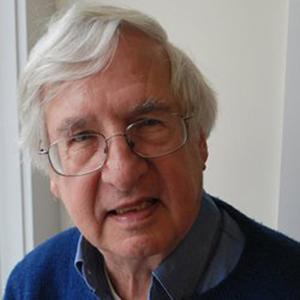
Christopher H. Scholz
PROFESSOR EMERITUS OF APPLIED PHYSICS AND APPLIED MATHEMATICS
228 Seismology
Lamont-Doherty Earth Observatory
Palisades, NY 10964
Research Interests
Tectonophysics, experimental and theoretical rock mechanics, especially friction, fracture, hydraulic transport properties, nonlinear systems, mechanics of earthquakes and faultingScholz earned a B.S. in Geological Engineering from the University of Nevada in 1964 and a Ph.D. in Rock Mechanics from the Massachusetts Institute of Technology in 1967. He was one of the first to combine discipline fields of Geological Engineering and Physics in order to better understand the process of what is happening with tectonic plates and how earthquakes are formed
Scholz is a Professor of Earth and Environmental Sciences and of Applied Physics and Applied Mathematics at Columbia University. The author of more than 250 papers, his monograph, “The Mechanics of Earthquakes and Faulting” (2002) is considered the authoritative work on that subject. He has studied earthquakes extensively in Japan, New Zealand, southern Africa, the western U.S., and the island arcs of the Pacific. He received the Murchison Medal from the Geological Society of London in 2005 and the Harry Fielding Reid Medal from the Seismological Society of America in 2016.
PROFESSIONAL EXPERIENCE
- Professor of Earth and Environmental Sciences, Lamont-Doherty Earth Observatory, Columbia University
- Professor of Applied Physics and Applied Mathematics, Columbia University
- Head, Center for Nonlinear Earth Systems
HONORS & AWARDS
- Harry Fielding Reid Medal of the Seismological Society of America, 2016
- Murchison Medal from the Geological Society of London, 2005
SELECTED PUBLICATIONS
- Transition regimes for growing crack populations, Spyropoulos, C.; Scholz, C. H.; Shaw, B. E. , Physical Review E, May, Volume 65, Issue 5, p.-, (2002), Doi 10.1103/Physreve.65.056105
- The Mechanics of Earthquakes and Faulting, 2nd ed, Scholz, C.H., (2002)
- Earthquakes and friction laws, Scholz, C. H., Nature, 391(6662), 37-42 (1998)
